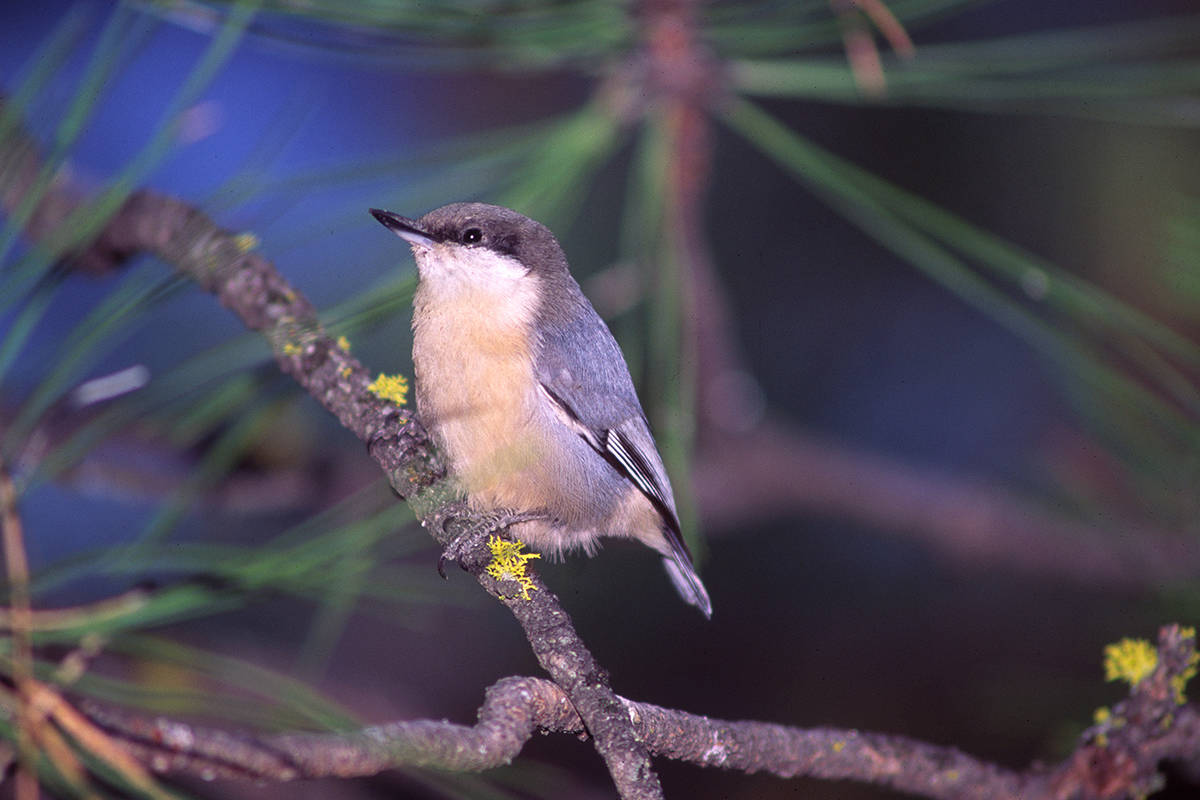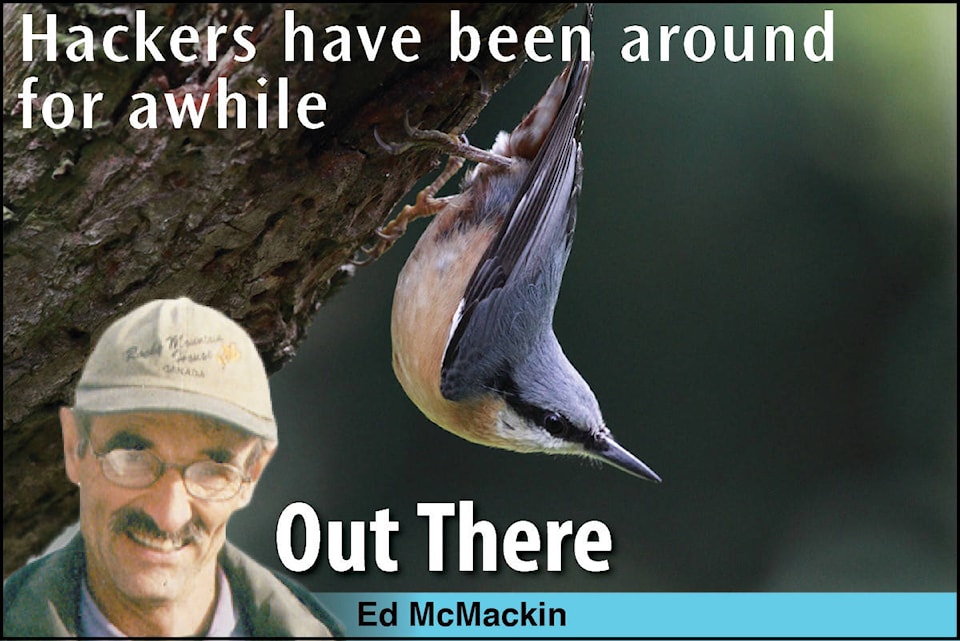By Ed McMackin
The origin of some bird names have mystified me. Take “nuthatch” for example. I used to think that perhaps the name had something to do with caching nuts for later or winter use. But that doesn’t seem to be the name source. On checking, I noticed that “nut hacker”, was a rarely used substitute. The term comes from Old English, meaning to cut or chop apart in a random fashion. That makes more sense to me as that is precisely what nuthatches do.
A way back I saw a nuthatch pecking at a tree, or, at least I thought it was. Sounds like a woodpecker. But in this case, the nuthatch was hacking at a sunflower seed it had wedged in a bark crevice to hold it in place. Now, nuthatches will peck away at a soft or rotten place in a tree trunk to hollow out a nest site. (They will also use a freshly made, unpainted bird box) Once I observed two Red-Breasted Nuthatches speedily taking away sunflower seeds faster than they could hack them apart. I found they were caching (as in cache) them in the bark of a cedar tree, like Clark’s Nutcracker who does that for winter use.
Our most common nuthatch is the Red-breasted. It is a year-around resident but is more commonly seen at winter bird feeders. The white-breasted Nuthatch is occassionaly seen here in winter. It is a bit larger than the Red-breasted species and has a white breast as opposed to a redish-brown breast. Then, there is the one that “should” be here.
The white-breasted Pygmy Nuthatch, as the name implies, is a bit smaller than the Red-breasted Nuthatch and it likes to wear shades of gray. This nuthatch is more gregarious than other nuthatches and, in its range may be seen, fall through spring, flying about in family flocks or mingling with the Checkadee species. But like the nuthatches and most other birds becomes more solitary in the breeding season.
The Pygmy Nuthatch has been seen on winter bird counts in the Cranbrook area, and in spring in the vicinity of Nancy Green Lake. To the south of us, it nests and probably winters along the Ponderosa Pine bluffs just north of Bonner’s ferry, Idaho. It will use a nest box and other sites, expecially ones artficially hollowed-out in a tree trunk or stub.
For a nest site, the Red-breasted will hollow out a cavity in punky wood. They have a habit of putting globs of pitch around the cavity entrance, and even around the entrance of a nest box. It is thought this keeps out ants.
Nuthatches are, roughly, chickadee-sized birds and often fly with them. The most likely place to find them, in winter, is in the vicinity of and at bird feeders. White-breasted Nuthatches seem to prefer deciduous forests and the Red-breasted are most commonly found in coniferous forests but may be found in mixed forests.
The Pygmy Nuthatch is the most tree-specific of the nuthatches. It prefers large stands of Ponderosa Pine and forests where the predominate tree species is Ponderosa (Yellow Pine). It favors Ponderosa over other pine species. (Pines are a coniferous species but not all coniferous species are pines).
There are three species of nuthatches commonly found in the Pacific Northwest – Redbreasted, White-breated and Pygmy Nuthatch. In your nuthatch search you may see the Brown Creeper which has a similar foraging habit but this brown-streaked bird is a bit more adept, than the nuthatches, at going head-first down a tree. The nuthatch you are not likely to see is the Pygmy but then, because it is on all sides of us, you may find it. Carefully check all the nuthatches you see at your feeder especially if you reside near stands of Ponderosa Pine or coniferous forests in the 2000 foot elevation range. (The Pigmy Nuthatch is not a young White-breasted).
If you spot a Pygmy Nuthatch try and get a photo but call me either way.

